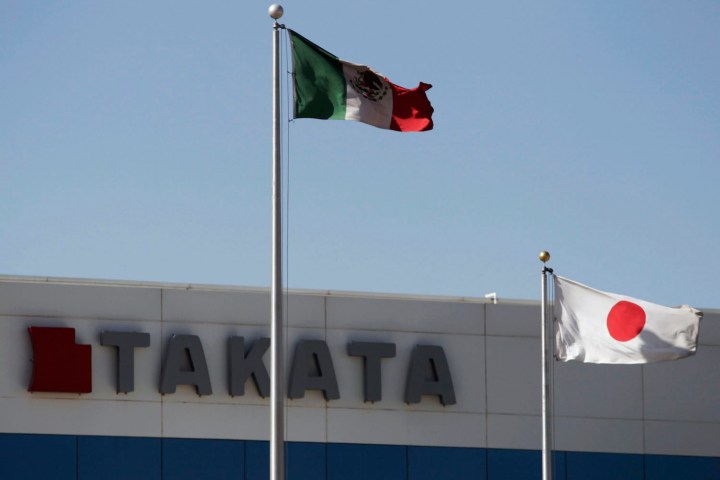
Reportedly, the semi truck was traveling toward a Takata facility in Eagle Pass, Texas, when the incident occurred. The fallout included the destruction of a nearby home, one death, and four serious injuries.
As a reminder, Takata’s recall, which recently doubled in size to more than 65 million airbag units, attempts to address a lethal design flaw. According to NHTSA administrator Mark Rosekind, the ammonium nitrate explosive propellant in the inflators can degrade over time. As a result, when the airbag inflates, it can burn too quickly, explode with too much force, and send shrapnel through the airbag and into passengers.
Read More: Takata airbag recall doubles
Though it’s unclear if this same defect is the cause of the truck accident, the Department of Transportation of Laredo, Texas, reports that the explosion was so intense that it forced the shutdown of nearby roads for 17 hours. The truck was delivering inflators that originated from Takata’s Monclova, Mexico facility, which has been confirmed as one of the sources of defective airbags.
There have been more than 10 deaths and at least 100 injuries due to the inflator problem, according to Consumer Reports. The NHSTA has issued the recall remedy in five stages, in decreasing threat levels. NHTSA’s Rosekind stated, “NHTSA’s aggressive actions in 2015 means this recall is already a year ahead of where it would have been if the agency had waited for this research. As a result, all of the most dangerous inflators responsible for the deaths and injuries are already under recall.”
More than 10 million vehicles have already been fixed, but that leaves over 20 million with dangerous “safety” devices still left to be mended. Basically, if you drive a car in the United States produced sometime after 2002, it’s best to get it checked out.


